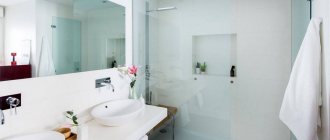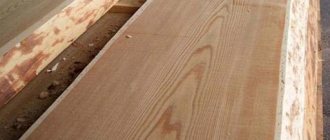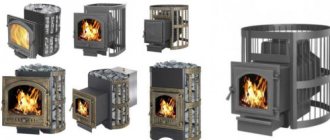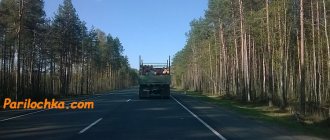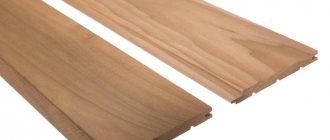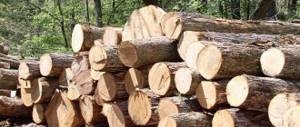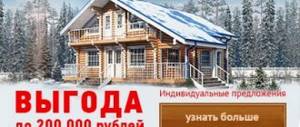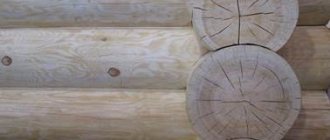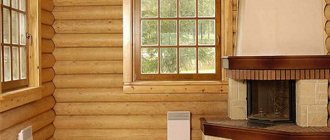| Name | Variety | Size | K ol. per pack | Price per piece/pack. | Price per m2. |
| Linden lining, spliced | E | 96 × 16 × 2.1/2.4/2.7 | M² | 530 | |
| Linden lining N. Novgorod | E | 96 × 16 × 1.0 – 1.7m | M² | 560 | |
| Linden lining N. Novgorod | E | 96 × 16 × 1.8 – 3.0m | M² | 950 | |
| Linden lining | A-E | 96 × 16 × 1.0 – 1.7m | M² | 465 | |
| Linden lining | E | 96 × 16 × 1.0 – 1.7m | M² | 665 | |
| Linden lining | A-E | 96 × 16 × 1.8 – 1.9m | M² | 490 | |
| Linden lining | A-E | 96 × 16 × 2.0 – 3.0m | M² | 920 | |
| Linden lining | E | 96 × 16 × 2.0 – 3.0m | M² | 1200 |
There are sizes for which the price is significantly lower + a good discount if you purchase in a sufficiently large volume (entirely for a bathhouse or sauna).
For most people, a bathhouse or sauna has already become an important tradition in their lives. Therefore, the attitude towards it is quite serious, be it construction or interior decoration. The correct choice of building and finishing materials is of great importance. Despite the variety of modern finishing options, most still prefer natural products, giving preference to one or another type of wood. The main thing is that the choice made meets all requests and is of sufficient quality.
Covering a bathhouse or sauna is a very important process. Not every type of wood can be used in these premises. Linden lining is ideal for finishing a bathhouse or sauna . This is an environmentally friendly material that creates a special atmosphere in the room thanks to the essential oils contained in linden wood and retained in it even after the products have been thoroughly dried. In addition, the fluids of essential oils saturating the room create a healing effect for bath procedures. Any linden lumber gives the room warmth and coziness.
Types of wood lining
The number and location of irregularities, knots and roughness affects the class of the lining according to GOST:
- “Extra” class of lining – there are no defects, the surface is smooth and even.
- A-class lining - possible presence of knots. But other defects, such as cracks, holes, potholes in wooden panels of this class are unacceptable.
- B-class lining - there are cracks, knots, small depressions and holes, but elimination work - using putty - is carried out at the factory.
- C-class lining is the lowest quality class; the material contains holes and indentations, knots, and cracks.
“Extra” class cladding material is rarely made from solid wood. This is due to the fact that a single piece of wood is extremely difficult to turn into a smooth canvas, so the price for such a product would be catastrophically high. Therefore, the production of such panels is often carried out by splicing.
Which type of wood has more reliable characteristics?
Wood materials do not lose their relevance in decorative, construction and finishing works. Linden lining is a harmonious combination of reliability, aesthetic and performance properties. When choosing wooden lining for decoration, the customer strives to create a unique natural interior. Recently, designers have fallen in love with wood finishing, because it helps to add special color and sophistication, transforming the room as a whole.
The unique texture and color of wood sets the tone for the entire atmosphere of the room, filling it with comfort and warmth. Wood as a material is suitable for any interior style: modern, classic, high-tech and many others, creating a feeling of comfort and security.
Masters of finishing works also highlight wood for its qualitative differences from other construction and finishing materials. After all, no artificial material can compare with the natural structure of wood and its unique pattern.
Undoubtedly, each type of wood has its own characteristics, advantages and disadvantages. For example, not all types of wood can withstand climatic and weather influences without compromising their appearance.
Eurolining
The building materials market is gradually filling with a new type of cladding board - eurolining. It is produced from the part of the trunk located between the core and the bark. The structure of this layer of wood is uniform and durable.
The prefix “euro-” refers to the cross-section of the wood panel profile. The main difference is the board tenon, or rather its size. The length of the tenon of the eurolining is 8 mm, and the length of the regular canvas is 4 mm. Changes in ambient temperature or humidity can cause fluctuations in the width of wood paneling. This will cause gaps to appear if the width change is larger than the tenon size. Then the balcony will turn from a warm and cozy room into a ventilated room. Eurolining reduces the risk of such a situation, practically eliminating it: it is difficult to imagine natural conditions in which a tree, exposed to environmental influences, will increase in size by 8 mm.
What is the difference?
Standard wooden lining is an ordinary planed board made of wood with natural moisture. For ease of installation, this material is produced with a single tongue, groove and profile.
Dimensions of standard lining.
Eurolining is superior to its “simple” brother in all respects. It is a dry planed board. In addition to the grade, information about which will be presented below, there are also GOST standards, according to which humidity should not exceed 15 percent.
Dimensions of classic eurolining
The average humidity level usually ranges from 8-13 percent. Procured taking into account seasonal requirements, all technological processes are strictly observed.
It differs in humidity, grade of wood, geometric parameters (thickness and width), as well as physical and mechanical parameters of wood . There is also another significant feature that distinguishes eurolining from ordinary lining - the size of the tenon.
More modern and of higher quality, on the reverse side it has ventilation outlets, creating additional opportunities for ventilation and preventing the formation of condensation.
Tips for choosing
The first piece of advice applies to the purchase of cladding boards of all classes and types: be careful, unfortunately, cases of deception are not so rare. Unscrupulous sellers, offering the buyer high-quality lining, replace the canvases inside the package with lower quality ones. Ask to see all items before purchasing. If the seller refuses to fulfill the stated condition, it is better to protect yourself and find another place to buy.
Advice on choosing a tree
Conifers, as already mentioned, are the most popular: the resin they contain has an antifungal effect and helps reduce humidity levels. Therefore, such boards are often used for exterior finishing of buildings.
Hardwood panels are suitable for interior cladding of ceilings and walls in a living room, bathroom or bathhouse. Such boards (aspen, linden or alder) are able to withstand humidity and high temperatures without heating up.
Hardwood linings do not contain resins, which will save you from worrying about the appearance of the finish when doing interior work.
Advice on choosing a class
Facades, balconies, walls of baths and saunas are objects for which cladding with class A wooden panels will be a suitable solution both in terms of functionality and in terms of presentable appearance.
Class C is only suitable for finishing utility buildings: sheds, garages, and so on.
“Extra” and B classes are used by everyone depending on the amount of funds allocated for the purchase of wood.
Any class and type of cladding wood will last a long time and live up to expectations. The main thing is to choose boards whose functions will meet the assigned tasks.
For example, A-class panels made of hardwood when covering the walls of a bathhouse or sauna will enhance the healing effect of staying in such a place. And thanks to “Extra” coniferous cladding boards, you won’t have to worry about the reliability and strength of the cladding - the facade of the house will be reliably protected.
Which lining is better for a bathhouse: aspen or linden?
Better is a relative concept. And here, as always, we advise you to identify your priorities. In the meantime, let’s take a more detailed look at what both types of wood are.
Advantages and disadvantages of linden lining for a bath
Let's start with the fact that “linden lining” tacitly implies that wood from one of the species of this genus . They are very similar in properties, so you should not check with the seller what type of linden. In general, things get to the point where they can sell you aspen under the guise of linden and vice versa - even out of ignorance.
The different species differ slightly from each other, but there is evidence that the hybrid of large-leaved and heart-shaped has denser wood, and therefore slightly harder and more durable.
The color of linden wood is very light - from white to yellowish, sometimes, however, the shade is slightly reddish or towards brown, but more often it is yellowish wood, without visible textures, without any difference in the color of the core and sapwood. The texture of the linden tree is practically indistinguishable to the eye; the annual rings are not visible. Looks smooth, like plastic.
BY THE WAY! It happens that there are pieces of greenish color, they are easily confused with aspen. But there is also a smell - linden has a unique smell.
But the most important thing for those who are looking at linden lining for a bathhouse is its characteristics.
The low density of linden wood and its loose structure make it a favorable environment and food for fungi. And despite the fact that the humidity in the bathhouse is high, and this is exactly the condition that mushrooms need, it turns out that you should use linden in the bathhouse only with confidence in ventilation.
Because antiseptic in the steam room and washing room, and these are the wettest areas of the bathhouse. So it turns out that you either need to be prepared for frequent repairs of the lining, or minimize the time the wood is exposed to water. As an option, you can coat the wood with impregnations, which will significantly reduce the amount of moisture absorbed. (For information on impregnation, see the article Finding out how to treat lining in a bathhouse.). You may also want to consider purchasing impregnated wood.
In all reference books, linden's resistance to fungi is considered the minimum level for wood . However, it is worth asking why this tree is so persistently recommended by craftsmen and participants in various forums.
Of course, this can be called a tradition. It was once noticed that doors made of linden do not jam in the opening after bath procedures. This is a sign of slight swelling of linden under the influence of humidity. Therefore, linden is actively used for the production of furniture and windows.
Photo: bath door (linden)
But here’s what’s interesting: we ourselves easily repeated this common statement until we decided to look in the reference books. And this is what was discovered:
Please note that aspen shows better characteristics than linden. But why doesn’t it have the same fame as the linden tree? We will offer our version a little lower, but for now we will assume that the glory of linden as the only wood with low swelling is slightly exaggerated .
Among both the advantages and disadvantages is the fact that linden has soft wood that can be easily processed. If someone decides to plan and polish it with their own hands, then this will be an advantage, but during operation it is rather a disadvantage, because it is easy to damage the linden surface.
At the same time, it chips a little worse than aspen, so in this matter the advantage of linden is clear.
Another circumstance that sometimes turns out to be decisive when choosing is the smell of linden wood. But it is subtle and unobtrusive.
We will remain silent about energy because we have absolutely no understanding of it. Who is the donor, who is the vampire, and whether this is important during bath procedures - decide for yourself.
Who likes to get information from videos - almost everything is said in the video below:
Linden or aspen lining - which is better for a bathhouse: the pros and cons of aspen
Aspen is a member of the poplar genus, so its wood can be sold together with black or white poplar wood. In Europe the markings will be different, in Russia... we can assume that there are more aspens than poplars, so the probability of buying aspen is quite high.
However, the strength characteristics of aspen and poplar are very similar, so if anything matters here, it is that aspen tolerates moisture and even being in water better than many others.
At the same time, its resistance to fungal attack is at the same level as that of linden, it is almost the same and very low.
IMPORTANT! Distinguish resistance to moisture from resistance to fungi - wood will not rot from water, but it can be destroyed by mold. However, mold is found everywhere, its spores are carried in the air that we breathe, so for infection only favorable conditions are needed - the same water and wood.
If you carefully looked at the plate above, you noticed that according to its data, it turns out that aspen gives even less expansion and contraction when moistened and dried out than linden. So why isn’t aspen the favorite of bathhouse owners?
We think that the whole point is that it is not resistant to infection even during the growth process. Aspen reaches maturity at the age of 30-50 years, at this time it has the thickest trunk, but, unfortunately, many trees have a rotten core inside.
Therefore, a good aspen board is rare . The selection has to be carried out more carefully, despite the fact that a lot of aspen is harvested. But it is used in the same match industry, so, good or bad, it does not lie dormant outside of construction.
ADVICE! We will teach you to distinguish boards that are starting to rot from normal ones. Take a sniff - if it seems to smell like vanilla, then the board is no good; the smell of vanilla is a hallmark of rotting aspen.
In construction, there is a demand for it either where budget construction is underway, or in the bathhouse.
Why don't they like aspen in the bathhouse? Its main disadvantage is that it darkens due to humidity. The original color of aspen is white, often with a slight greenish bias. But there is also aspen with a bias towards reddish-brown tones.
Example: an initially white aspen board on a shelf begins to darken
ATTENTION! The appearance of aspen and linden is quite similar; from one board you will not be able to tell what it is unless you know the smell of linden well, for example.
So, if we talk about future darkening, it ’s easy to get rid of it with the help of “Whiteness” bleach . And if you pre-coat aspen paneling with an oil and/or wax-based impregnation, it will not darken, because this is a direct consequence of exposure to moisture. We wrote about the use of bleaches and impregnations in the articles Choosing what to treat boards in a bathhouse and Oil for bathhouse shelves and other compositions appropriate in a steam room: all about the dangers and benefits of impregnations in a steam room.
The advantages of aspen include the fact that it does not deteriorate from prolonged exposure to water (this is good for well logs), and is also less prone to warping and cracking . Linden is not so water-loving, but it also doesn’t move much and it doesn’t crack much.
A video from the same company talking about the pros and cons of aspen in the bathhouse:
CONCLUSIONS: Aspen is a little better than linden in terms of mechanical characteristics, it can lose over time in terms of appearance without treatment, and it does not have a signature smell, linden is less resistant to water, inferior in terms of swelling and shrinkage coefficients, but not by much, does not darken (not so ), aromatic. Based on which paneling is better for a bathhouse: aspen or linden, the first is slightly ahead.
Self-installation of lining
Wooden panels are not only an aesthetically pleasing, but also an easy-to-install finishing option. The main advantage in installation is the tongue-and-groove fastening method. In order to cover a balcony yourself, you do not need knowledge or skills, only a minimum set of tools and assembly instructions. Lining is a dry material that does not require special conditions for work: only damp weather for external work and heating for internal work in the cold season.
Exterior decoration
The scope of application of wooden panels is wide due to the pleasant appearance and strength of the material. The external cladding of the building requires laying the canvas horizontally, from bottom to top. The cladding planks must be laid on top of each other, and the joints must be treated with special means. For example, polyurethane mastic is used to avoid problems with excessive moisture, as well as to provide thermal and sound insulation.
Internal lining
Decorating the inside of a room does not require special settings for the position of the panels: the boards can be laid both vertically and horizontally. In rooms where the humidity is higher than normal, it is advisable to position the linings vertically so that water does not accumulate in the grooves.
A factor that is important to remember when decorating a building is ventilation. Special openings are required to allow air movement. Protect the system from excess moisture; 20-40 cm are not covered with panels.
Wood care
Caring for wooden cladding panels is simple. Just remember the rules:
Firstly, excessive moisture leads to a decrease in the quality of the wood, so wooden cladding should not be wetted. The use of abrasive detergents and solvents is also unacceptable - this will destroy the surface of the wood. Contaminants are removed from the canvas with a dry or slightly damp soft cloth. In cases where it is necessary to remove caustic stains, a weak solvent is allowed.
Secondly, to extend the life of wooden cladding, the material should be treated with special compounds. Similar measures are recommended when the façade of a house or a room with a high level of humidity (saunas, baths, baths) is covered with wooden clapboard.
Dimensions
This type is mostly popular.
According to established state standards, the length of eurolining must be at least 120 centimeters and no more than 400 centimeters.
Some manufacturers also produce it up to 6 meters long . The profile width of this material can be 10, 11 and 12 centimeters.
The length of the spike is also different. The standard size of eurolining also differs in the length of the tenon; for it this parameter is 8-9 millimeters, while for a regular one it is only 4-6 millimeters.
Thus, the tongue-and-groove connection is wider, which facilitates the installation process, and the standard dimensions of the eurolining are more acceptable for work.
Let us summarize all the significant differences between the materials described. This material is different:
- wood quality;
- lower moisture content;
- the size of the tongue-and-groove joint;
- more complex profile;
- the presence of ventilation ducts;
- at a higher price.
Below are the prices:
The main advantages of aspen wood panels
High strength, durability and attractive appearance are the main qualities for which aspen panels are valued. This finish can hide any surface imperfections, electrical wiring and utilities. The panels do not need to be painted or coated with protective compounds. If you need lining, aspen is an ideal option in terms of price and quality.
In addition, the advantages of the material include the following properties:
- good resistance to moisture;
- environmental friendliness;
- ease of installation;
- long-term preservation of the original shade;
- stability of the material in a changing climate;
- no cracks;
- resistance to mold and mildew;
- affordable price;
- bactericidal.
Separately, the low thermal conductivity of the panels should be highlighted. This property allows you to use aspen lining for steam rooms and baths. Under the influence of steam, the surfaces do not heat up, which means there is no chance of getting a burn. In this respect, the material surpasses even expensive linden cladding.
FEATURES OF INSTALLING ASPEN LINING
When finishing a sauna or bathhouse, aspen lining is installed in two directions - horizontally or vertically.
When installing vertically, you can use cheap short boards and hide the joints under shelves or decorative elements.
In addition, under the shelves, where the lining is practically invisible, you can use boards of a lower grade than on visible areas of the walls.
This finishing method reduces the risk of cracks due to high temperatures and allows significant savings on costs.
How many linings are there in a cube? A simple calculation method using the 5th grade math formula
From my own experience, I can say that for domestic needs, 1 m3 of lining is enough for about 75-80 m2; taking into account the cuts, it will be possible to cover about 70 m2 of “usable area”. Naturally, this dimensional guideline is very approximate and I recommend that you perform the necessary calculations yourself, taking into account your individual task.
Now you will see that it is very easy. Any search engine will kindly remind you of the formula for the volume of a rectangular parallelepiped from 5th grade mathematics:
Let our lining have dimensions: Width
85 mm , Thickness 18 mm , Length 3 m
. We calculate the volume of one board V1 = 0.018 m*0.085 m*3 m=0.00459 m3 Quantity in one cube, pcs N= 1/0.00459 = 218 pcs
Attention: In the calculations we use the “useful” width of the lining, without taking into account the size of the tongue-and-groove connection, as the lining boards will be packed end-to-end.
To calculate the area that we can cover with 1 m3 of lining, we calculate the area of one board S1 = 0.085 m * 3 m = 0.255 m2 Take the number of boards calculated above and multiply by the area of one board S = 218 pcs * 0.255 m2 = 56 m2
Subtract 10% for trimmings: 56 m2-6 m2 = 50 m2
In total, 1 cube of board measuring 85*18*3000 mm is enough to cover a wall with an area of 50 m2 .
How to decipher the manufacturer's inscription
We read the marking as follows:
- Sheathing brand (see details below)
- Type of lining (see table below)
- ThicknessxWidthxLength
- GOST
- Sometimes manufacturers indicate the number of pieces per package
An example of a symbol for eurolining:
Grade C 12.5×96(88)x2000 mm 10 pcs. in unitary enterprise Eurolining grade C, 12.5 mm thick, 96 mm thick, 2000 mm long. Pack of 10 pcs.
An example of a regular lining according to GOST:
O-3-13x120x4000-GOST 8242-88 This means - Sheathing grade O-3 13 mm thick, 120 mm wide, 4000 mm long, manufactured in accordance with GOST 8242-88.
About weight
You need to know how much a cube of lining weighs, at least in order to understand what capacity of transport you need to order for the delivery of wooden lining. Its weight directly depends on the wood used to make the slats. The humidity of the lining is usually not too high (if properly stored in a warehouse), so this parameter can be ignored. The most common and popular types of material include the following.
- Expensive wood species: hornbeam, oak, beech. A cube of lining made from them weighs approximately 700 kg.
- No less valuable larch is somewhat lighter: the weight of a cube of lining made from this wood reaches 600 kg.
- Pine and alder material: 500 kg per cubic meter.
- The weight of cedar, linden and spruce lining is 450 kg.
Pine lining – weight 500 kg/cube
By the way, if the weight much exceeds the indicated figures, you should refuse to buy the chosen lining for interior decoration: it was either produced in violation of the technology, or was stored in absolutely unsuitable conditions. Moreover, the weight does not depend on the variety in any way, and if the seller convinces you that alder weighs 600 kilos because it belongs to category C, this is not true.
